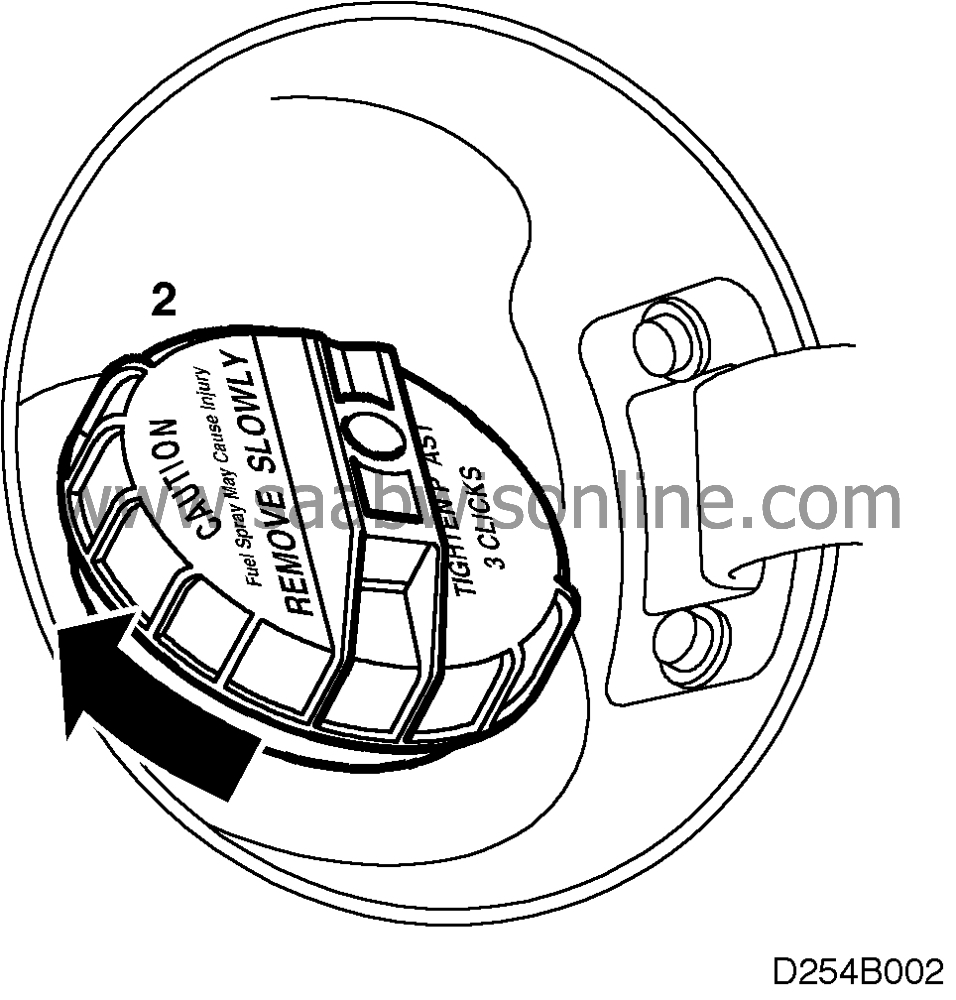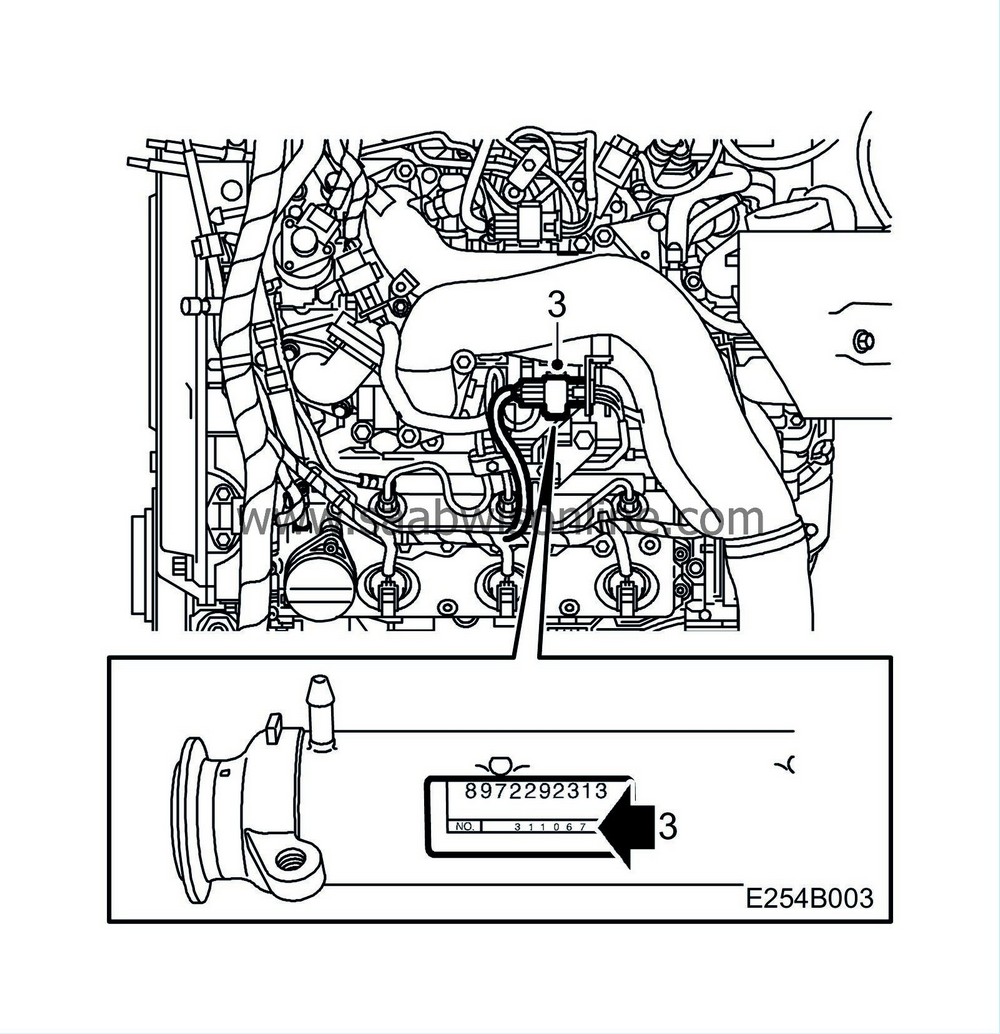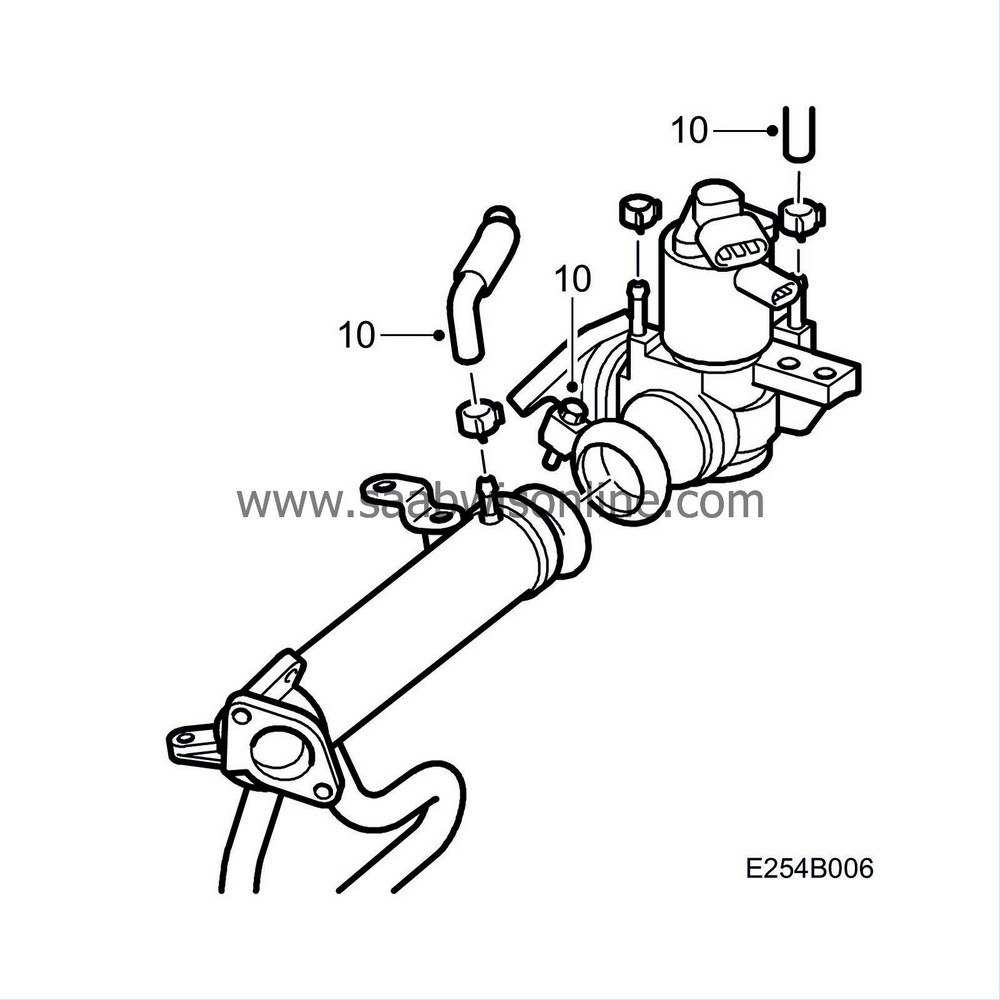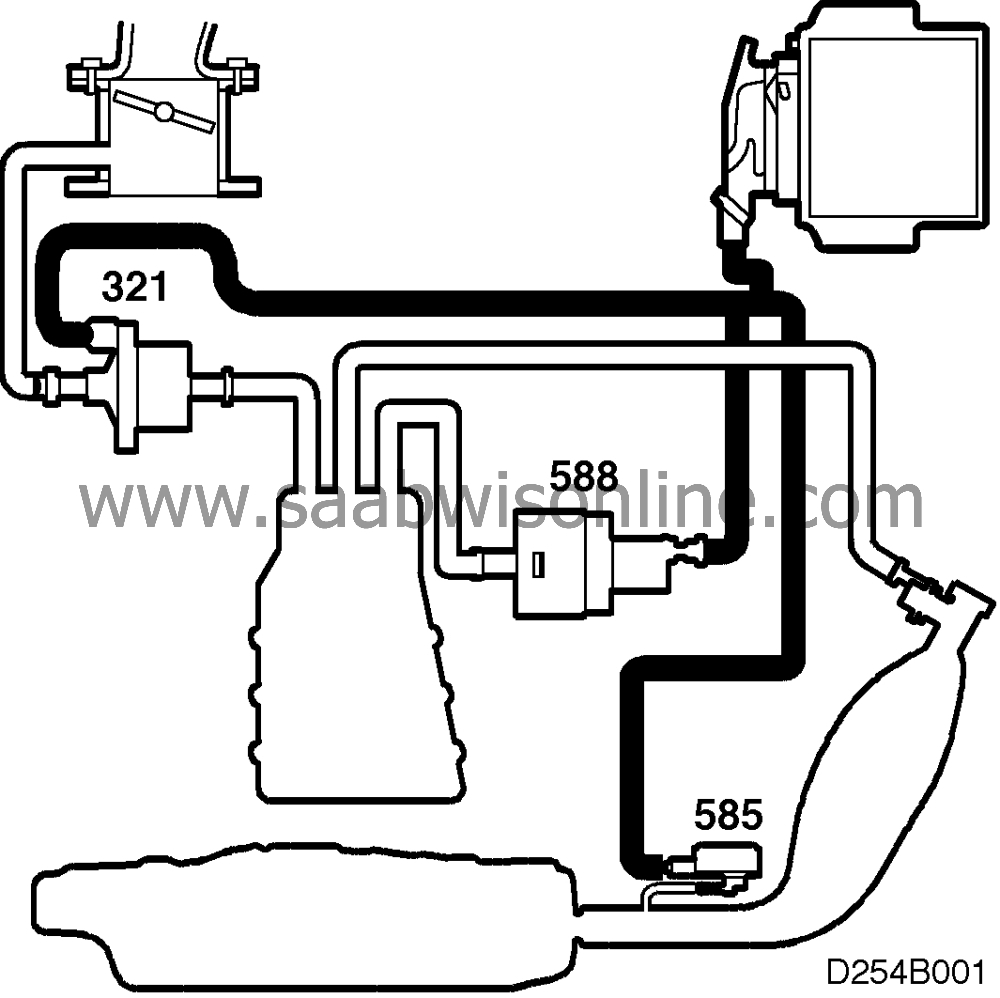Detecting leaks in the EVAP system
|
SERVICE INFORMATION
|
|
Bulletin Nbr:
|
234-1746
|
|
Date:
...........
|
MARCH 1997
|
|
Market:
|
US ONLY
|
|
|
Detecting leaks in the EVAP system
|
Saab 900 M96-97 with EVAP II.
It is possible for spurious diagnostic trouble codes relating to leaks in the EVAP
system to occur. A method has therefore been developed for checking whether a code is
spurious or whether there really is a leak in the EVAP system.
|
1.
|
Check that the pressure tester is in good
condition and not leaking.

|
|
2.
|
Check that the filler cap is on tight.
|
|
3.
|
Using e.g. a ’T’ piece, connect pressure tester J41413
between the inlet on the EVAP canister purge valve and the hose.
|
Note
|
|
Do not fit the pressure tester adaptor to the filler cap connection, as this would prevent
the filler cap from sealing in its normal position.
|
|
|
4.
|
Activate the EVAP canister shut-off valve by connecting battery voltage to the
valve (male connector on M96).
|
|
5.
|
Pressurize the system and perform the pressure test, following the instructions in
the Kent-Moore manual.
|

|
Action to be taken if leak detected
|
|
1.
|
Ensure that the shut-off valve is still
energized.
|
|
2.
|
Disconnect the hose from the EVAP canister purge valve at the intake
manifold.
|
|
3.
|
Raise the pressure again, following the instructions in the Kent-Moore
manual.
|
|
4.
|
Use ultrasonic leak detector J41416 to trace the leak. Start with the hose that
has been disconnected from the intake manifold and then follow the system lines and
components. Make a visual check of the system at the same time.
|
Note
|
|
The ultrasonic leak detector is sensitive to ambient noise in the workshop, such as that
made by exhaust-extraction equipment, compressors, air guns, air leaks from pneumatic
equipment, etc.
|
|
Air flows from the ventilation equipment in the workshop can also create interference to
the ultrasonic detector.
|
|
All such noise and interference can give rise to spurious readings indicating leaks in the
EVAP system, even when there are none.
|
Always, therefore, adjust the sensitivity of the ultrasonic leak detector, so that
the ambient noise, which often causes interference, is filtered out.
|
Note
|
|
Major leaks, such as those caused by a defective canister shut-off valve or a loose
hose connection, are difficult to detect, as the noise generated by them is usually outside the
sensitivity range of the ultrasonic detector.
|
|
For this reason, it is essential that you make a thorough visual inspection of the system
components, to check for leaks not detected by the equipment.
|
If you suspect leakage from the EVAP canister (located on the inside of the RH front
fender/wing) or its connections, this can be easily checked. Remove the side direction
indicator and insert the microphone there.
|
|
5.
|
Rectify any leaks detected and test the system again.
|
|
6.
|
Restore the car to its normal condition.
|







